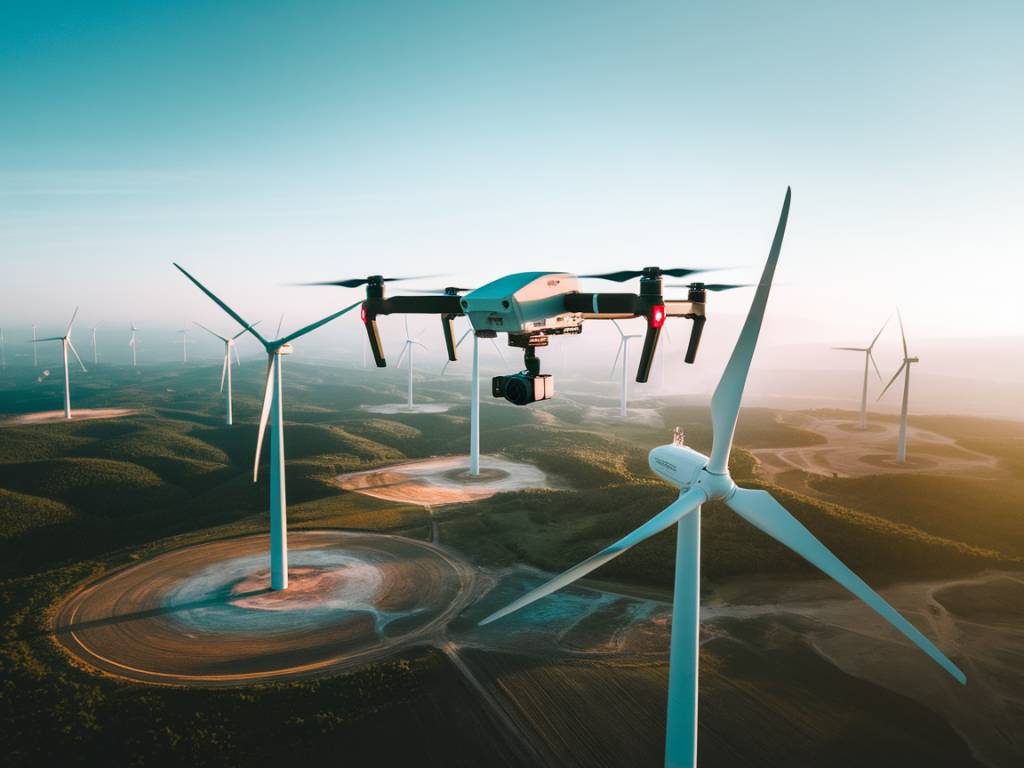The Silent Revolution: How Drones Are Transforming Renewable Energy
Imagine a world where inspecting a sprawling solar farm or a towering wind turbine no longer requires ladders, cranes, or an army of technicians. Sounds futuristic, doesn’t it? Well, that future is already here, brought to us by the hum of small, unassuming machines zipping through the skies—drones. These high-tech marvels are rewriting the playbook for managing renewable energy infrastructure and, in doing so, are turbocharging efficiency, safety, and sustainability.
But what exactly makes drones so indispensable to the renewable energy sector? Let’s break it down and explore how they’re reshaping this industry, one flight at a time.
The Eyes in the Sky: Monitoring and Maintenance Made Easy
Maintaining renewable energy infrastructure—whether it’s rows of solar panels in the desert or wind farms scattered across miles of ocean—is no small feat. Traditional methods involve manual inspections that are time-consuming, costly, and sometimes dangerous. Enter drones, equipped with high-definition cameras and thermal imaging sensors. These flying inspectors can comb through vast facilities in a fraction of the time, capturing precise data that humans simply can’t.
- Solar Farms: Drones can quickly identify faulty solar panels by detecting irregularities in heat signatures using thermal imaging. A task that would take days with a human team can now be completed in just a few hours.
- Wind Turbines: Inspecting a 100-meter-tall turbine is no longer a harrowing experience for technicians. Drones can effortlessly fly up to these towering structures, inspect blades for cracks or erosion, and provide detailed visual reports.
- Hydropower Facilities: Hard-to-reach areas, like dam walls or spillways, can be monitored for wear and tear without risking human lives.
This ability to enhance monitoring and maintenance not only saves time and money but also helps energy providers extend the lifespan of their infrastructure, further championing sustainability.
Data, Data, Everywhere: Unlocking Actionable Insights
Here’s a question: What’s the use of a drone without brainpower behind it? These technological allies don’t just gather data; they help analyze it. With advanced software and AI algorithms, drones in the renewable energy sector can turn raw information into actionable insights.
For instance, a drone inspection at a solar farm might reveal that a row of panels is underperforming due to accumulated dirt. This insight can be swiftly relayed to cleaning teams, ensuring optimal energy generation. Similarly, wind farm operators can use drone data to predict when a turbine component is likely to fail, enabling preemptive maintenance and reducing costly outages.
Safety First: Reducing Risks for Workers
Renewable energy infrastructure often resides in challenging and hazardous environments. Solar farms stretch across scorching deserts, wind turbines rise above turbulent seas, and hydropower dams are built in remote, rugged terrains. Inspecting and maintaining these sites can pose significant risks to workers.
Drones mitigate these dangers by taking humans out of harm’s way. No longer do teams have to climb towering turbines during a storm or trek across unforgiving landscapes. These flying robots step in and handle the hazardous tasks, ensuring that workers stay safe on solid ground.
A Cost-Effective Solution for a Growing Industry
Every industry loves efficiency, but in renewable energy, efficiency has an additional payoff: it accelerates the transition to a cleaner, greener planet. Drones are helping operators cut costs significantly by reducing the need for heavy equipment, large teams, and lengthy site shutdowns during inspections.
For example, consider the offshore wind sector, where deploying a single maintenance vessel can cost thousands of dollars per day. A drone, on the other hand, can perform much of the same inspection work at a fraction of the cost. These savings enable energy companies to divert resources to expanding renewable infrastructure, rather than spending them on maintenance alone.
Scalability and Accessibility: A Game-Changer for Developing Nations
Developing countries often face unique challenges in their transition to renewable energy, including budget constraints and lack of trained personnel. Drones offer a scalable and accessible solution. They’re relatively inexpensive, easy to deploy, and can operate in areas with limited infrastructure.
Imagine a startup in a rural region using drones to inspect a mini-grid solar installation. Instead of hiring outside experts or purchasing costly equipment, they can deploy a drone, gather the required data, and address maintenance needs without additional overhead. This kind of accessibility democratizes renewable energy deployment and ensures it reaches the far corners of the globe.
The Future of Renewable Energy Management Is Taking Flight
The integration of drones into renewable energy management isn’t just a fleeting trend; it’s quickly becoming an industry standard. With advancements in drone technology, such as improved battery life, AI-driven analytics, and even autonomous flight capabilities, their role is set to expand even further.
One promising frontier is the use of drones for post-disaster assessment. Imagine how quickly a drone could evaluate storm damage at a solar farm or wind farm, allowing providers to restore power to affected areas faster than ever before. These machines are not just tools—they’re becoming essential partners in building a resilient and sustainable energy future.
Are Drones the MVP of Clean Energy?
It’s hard to argue otherwise. From cutting costs and boosting efficiency to enhancing safety and enabling scalability, drones are revolutionizing how we manage renewable energy infrastructure. They bring speed, precision, and intelligence to an industry that’s pivotal to our planet’s future. The question isn’t whether drones will be a part of renewable energy management—it’s how much they’ll reshape it.
So, the next time you see one of these whirring machines buzzing overhead, don’t just think of it as a fancy gadget. Think of it as a quiet hero, playing its part in the grand quest for a cleaner, greener, and more sustainable world. Because in the end, isn’t that a future worth flying toward?
